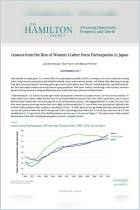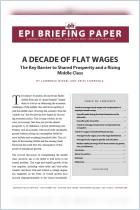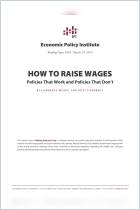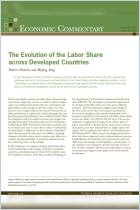
Read or listen offline
Amazon Kindle
áudio gerado automaticamente
1×
Faça o Login para ouvir o resumo em áudio.
áudio gerado automaticamente
Recommendation
While some observers are quick to blame trends like globalization and technology for stagnating wage growth in the United States, it turns out that there is much more to this story. Policy professionals at the Brookings Institution’s Hamilton Project look into what’s behind this phenomenon and offer a comprehensive and well-presented narrative on this issue, while also including some policy suggestions on how to combat sluggish pay growth. getAbstract recommends this succinct and accessible summary to policy experts, employers and employees.
Summary
About the Authors
Jay Shambaugh et al. are policy professionals with the Brookings Institution’s Hamilton Project.
By the same authors
Report
Report
Report


























Comment on this summary or Iniciar a Discussão